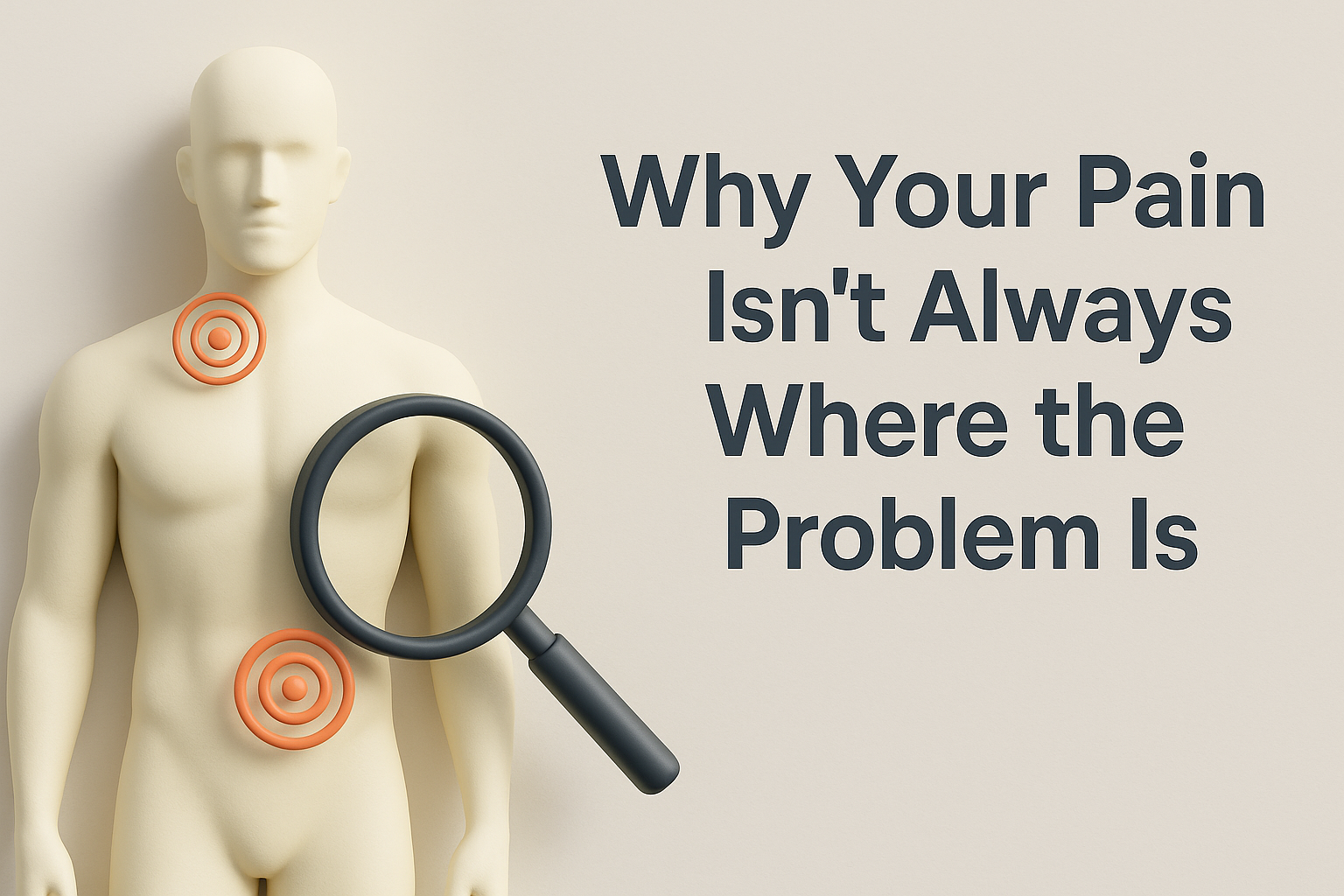Why Your Pain Isn’t Always Where the Problem Is
How Compensation Patterns Keep You Stuck — And What To Do About It
Have you ever had pain in one area of your body, only to be told the “real issue” is somewhere else entirely? You're not alone — and it's not in your head.
As a movement therapist, I see this every day. Someone comes in with knee pain, but the root cause is hip instability. Another client has neck tension, but the issue stems from poor breathing mechanics or weak core muscles.
In these cases, the pain is real but it’s not the primary problem.
🎯 Understanding Compensation Patterns
Your body is incredibly smart. When one area becomes weak, tight, or restricted, your nervous system automatically finds a way to keep you moving. This is called compensation — and while it might keep you going in the short term, over time it leads to poor movement quality, pain, and injury.
For example:
Tight hip flexors may compensate for weak glutes.
Overactive upper traps might compensate for poor shoulder stability.
Back pain could be a result of poor core engagement or breathing dysfunction.
These compensations don’t always hurt at first but they often become the silent driver of pain later on.
🔍 Why Local Treatment Often Falls Short
If we only treat the site of pain (like massage, needling, or stretching a sore muscle), we might get short-term relief. But unless we correct the dysfunctional pattern, the pain will likely return.
That’s why (if a client doesn’t have an acute flair up) I start every session with a Comprehensive Functional Assessment. We look beyond symptoms to assess:
Muscle activation patterns
Joint mobility and segmental control
Breathing mechanics and core function
Scar tissue and old injury history
Nervous system input and compensation strategies
Only by understanding the whole movement system can we fix the root issue.
🔄 Reprogramming Your Movement
Once we identify what’s overworking and what’s underperforming, the goal is to reset the pattern. We use techniques like:
Neurokinetic Therapy (NKT)
Manual therapy and dry needling
Corrective exercises and strength integration
Breathing coaching and spinal mobility work
The result? Your body starts working with you — not against you.
You move more efficiently, feel stronger, and regain trust in how your body performs.
✅ Key Takeaway
If you’re stuck in a cycle of tightness, tension, or recurring pain, don’t just chase the symptoms. Look deeper.
Ask: “What is my body compensating for?”
Fix the pattern, not just the pain — and your results will last longer, feel better, and restore your confidence in your movement.
📅 Ready to get to the root cause of your pain?
Book an assessment with Brayden Smith Health today and take the first step toward a body that moves freely and confidently.

